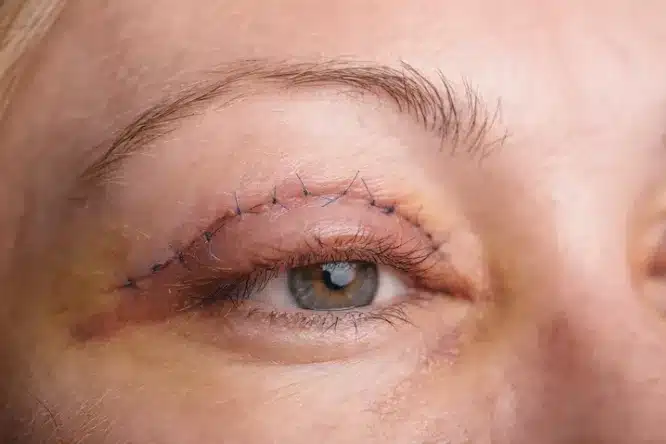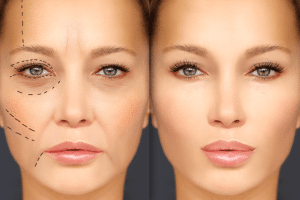The cost of blepharoplasty, a key procedure for eyelid rejuvenation, varies widely depending on the complexity of the surgery, including additional techniques such as forehead lift, ptosis correction, and endoscopic brow lift. These complementary procedures, aimed at enhancing the overall aesthetic result, can significantly influence the final price. Understanding the interplay between these factors is essential for patients considering the investment in their appearance.
Causes of the Increased Cost of Blepharoplasty
There are multiple causes of the increased cost of blepharoplasty, which can be categorized as follows:
The increased cost of blepharoplasty, or eyelid surgery, can be attributed to several factors. Here are four primary causes:
Advancements in Surgical Techniques and Technology
Innovations in surgical methods and the introduction of new technologies can lead to better outcomes but often come at a higher cost. These advancements may include the use of laser technology, endoscopic equipment, and more precise instruments that offer greater control and reduced recovery times. Such technologies require significant investment by clinics and practitioners, leading to increased procedural costs.
Advancements in surgical techniques and technology have significantly influenced the field of cosmetic surgery, including blepharoplasty. These advancements aim to improve the safety, efficacy, and outcomes of procedures, while often also minimizing recovery time and enhancing precision. Here are some key developments in this area:
Laser Technology
Lasers are increasingly used in blepharoplasty to make incisions, remove or reposition fat, and tighten skin with greater precision. Laser technology minimizes bleeding, reduces swelling and bruising, and promotes faster healing compared to traditional scalpel techniques. The use of lasers can also lessen the risk of scarring and infection.
Endoscopic Techniques
Endoscopic blepharoplasty involves the use of a tiny camera and specialized instruments inserted through small incisions. This technique allows for detailed visualization of the surgery area on a monitor, enabling precise modifications with minimal incisions. The result is less visible scarring, reduced recovery time, and potentially improved surgical outcomes.
Transconjunctival Blepharoplasty: This is a technique for lower eyelid surgery where incisions are made inside the eyelid, leaving no visible external scars. It’s particularly useful for removing or repositioning fat without the need for external incisions. This method has become more popular due to its less invasive nature and reduced recovery time.
Fat Repositioning: Rather than removing fat from the eyelids, surgeons now often reposition fat to fill in hollows and smooth transitions between the eyelid and cheek. This technique can provide a more natural and youthful appearance, addressing both puffiness and under-eye hollows.
Surgeon Experience and Reputation
The expertise and reputation of the surgeon performing the blepharoplasty can significantly influence the cost. Highly skilled surgeons with extensive experience and successful track records in cosmetic surgery typically charge more for their services. This premium is often associated with a higher likelihood of achieving desired outcomes and minimizing complications, which many patients are willing to pay for.
Clinic contact number: +989371200167
Geographic Location
The cost of blepharoplasty can vary widely depending on the geographic location where the surgery is performed. Urban areas with a higher cost of living, such as major cities or regions known for specialized medical services, often have higher surgical fees. This variation is due to differences in overhead costs, including clinic rent, salaries, and local market factors that influence the price of medical services.
Comprehensive Patient Care
The overall patient care experience, including pre-operative consultations, post-operative follow-ups, and personalized care plans, can also affect the cost. Practices that offer a more comprehensive approach to patient care, with detailed consultations, customized treatment plans, and attentive follow-up care, may charge more for their services. This holistic approach ensures patients receive the best possible outcomes and support throughout their surgical journey, which contributes to the increased costs.
These factors combined contribute to the varying costs of blepharoplasty procedures. Patients considering eyelid surgery should consult with multiple surgeons to understand the specific factors influencing the cost of their procedure and weigh these against the potential benefits and risks.

Types of Blepharoplasty
There are several types of blepharoplasty procedures, including:
- Upper Eyelid Surgery: Remove excess skin and fat from the upper eyelids to create a more open and youthful appearance.
- Lower Eyelid Surgery: Addressing under-eye bags, wrinkles, and sagging skin on the lower eyelids.
- Double Eyelid Surgery: Creating a crease in the upper eyelids for those with monoids.
- Functional Blepharoplasty: Performed to improve vision and comfort by removing excess skin and tissue that may be obstructing vision or causing discomfort.
- Revision Blepharoplasty: Corrective surgery for patients who have had a previous blepharoplasty and are seeking improvements or revisions.
Occasionally, some functional surgeries may be covered by your insurance. For example, if you have a severely low-hanging upper lid that is obstructing your vision and affecting your day-to-day activities like driving, insurance may pay for all (or a portion) of your surgery. Stein Plastic Surgery
Insurance Coverage of Blepharoplasty
Insurance coverage for blepharoplasty varies depending on the policy and the specific circumstances. Generally, cosmetic procedures are not covered by insurance.
However, if deemed medically necessary, functional blepharoplasty, which is performed to address medical concerns such as impaired vision or discomfort, may be covered by insurance. It is essential to consult with your insurance provider and surgeon to determine eligibility for coverage.
The average cost of cosmetic eyelid surgery (blepharoplasty) is $3,339, according to the latest statistics from the American Society of Plastic Surgeons. This average cost is only part of the total price – it does not include anesthesia, operating room facilities or other related expenses. Please consult with your plastic surgeon’s office to determine your final fee.
A surgeon’s fee for cosmetic eyelid surgery will be based on his or her experience, the type of procedure used and the geographic office location.
Many plastic surgeons offer patient financing plans for cosmetic eyelid surgery, so be sure to ask.
Clinic contact number: +989371200167

Advancements and Economic Impacts in Blepharoplasty
About the cost of blepharoplasty, research conducted by institutions such as the Johns Hopkins University School of Medicine and prominent figures in the field like Dr. Michael E. Jones have shed light on the evolving financial aspects of this cosmetic procedure. These studies highlight not only the direct costs associated with the surgery itself but also consider the broader economic impact, including post-operative care and the potential for revision surgeries. The most active company in the realm of cosmetic surgery innovations, particularly in technologies that impact blepharoplasty, is Allergan. Allergan has been at the forefront of developing dermal fillers and botulinum toxin products, which are often used in conjunction with blepharoplasty to enhance aesthetic outcomes.
In recent years, statistics and figures have illustrated a noticeable increase in the average cost of blepharoplasty. According to the American Society of Plastic Surgeons, the average cost of eyelid surgery in the United States has risen by approximately 3% annually over the last five years. This increase is reflective of the advancements in surgical techniques and technologies, as well as the growing demand for cosmetic procedures among a broader demographic. Moreover, hospitals and clinics specializing in cosmetic surgery, such as the Cleveland Clinic’s Cosmetic & Plastic Surgery Center, report a significant uptick in the number of blepharoplasty procedures performed annually, further indicating the procedure’s rising popularity and its impact on overall cost trends in the field.

20 Points About the Cost of Blepharoplasty
The cost of blepharoplasty is influenced by various factors, including the surgeon’s experience, geographic location, complexity of the procedure, and facility fees. While insurance may cover functional blepharoplasty, cosmetic procedures are typically not covered.
Blepharoplasty, also known as eyelid surgery, is a cosmetic procedure that aims to improve the appearance of the eyelids. It removes excess skin, fat, and muscle from the upper and/or lower eyelids to give a more youthful and rejuvenated appearance.
- The cost of eyelid surgery can vary widely based on the surgeon’s experience, geographic location, and facility fees.
- Blepharoplasty cost may increase if combined with other procedures.
- Anesthesia type and fees can impact the cost of eyelid surgery.
- Preoperative medical testing can contribute to the overall cost of blepharoplasty.
- The cost of eyelid surgeryis typically higher for more complex procedures.
- Revision blepharoplasty can be more expensive than primary surgery.
- Insurance may cover the cost of eyelid surgeryif it is deemed medically necessary.
- Financing options may be available to help with the cost of eyelid surgery.
- Consultation fees may be applied to the cost of eyelid surgery.
- Postoperative care costs can add to the overall cost of blepharoplasty.
- The cost of blepharoplasty is generally not covered for cosmetic reasons.
- Patients should obtain a detailed cost breakdown before proceeding with blepharoplasty.
- Geographic location significantly affects the cost of blepharoplasty.
- Experienced surgeons may charge more for blepharoplasty.
- Lower eyelid surgery may have a different cost than upper eyelid surgery.
- The cost of eyelid surgerymay change based on the extent of tissue removal.
- Medical tourism can affect the cost of eyelid surgery.
- Patients should consider potential risks when evaluating the cost of eyelid surgery.
- Double eyelid surgery has a unique cost structure compared to other types of eyelid surgery.
- The cost of eyelid surgery is an essential factor in the decision-making process.

Summary
the Cost of Blepharoplasty depends largely on the individual’s specific aesthetic goals and the underlying anatomical considerations. A forehead lift, often performed as an endoscopic brow lift, is ideal for those seeking to address sagging brows and forehead wrinkles, creating a more youthful and alert appearance. This procedure can significantly lift the eyebrows, reducing the appearance of excess skin on the upper eyelids, and is sometimes complemented by eyelid ptosis repair to correct drooping eyelids resulting from muscle weakness. On the other hand, eyebrow lift surgery focuses on elevating the position of the eyebrows themselves, enhancing facial expressions and symmetry.
For individuals primarily concerned with the appearance of their eyes rather than the forehead or brows, eyelid surgery may be the preferred option. Lower eyelid surgery is tailored to remove or reposition fat deposits, tighten skin, and eliminate bags under the eyes, while ptosis correction specifically targets the improvement of the upper eyelid’s position for a more open, refreshed look. Eyelid surgery, including eyelid ptosis repair, offers a solution to those whose vision is impacted by drooping eyelids or who wish to rejuvenate the area around their eyes. Ultimately, the choice between a brow lift and eyelid surgery should be made in consultation with a qualified surgeon who can assess the unique facial structure and aesthetic desires of the patient, ensuring a harmonious and satisfying outcome.
Clinic contact number: +989371200167
FAQs
1. How much does blepharoplasty cost on average?
The cost of blepharoplasty can vary widely depending on factors such as the surgeon’s experience, the geographic location of the clinic, and whether the procedure is performed on the upper eyelids, lower eyelids, or both. According to the American Society of Plastic Surgeons, the average cost of cosmetic eyelid surgery was $3,282 in 2020, but this figure does not include additional expenses like anesthesia, operating room facilities, or other related costs.
2. What factors influence the cost of blepharoplasty?
Several factors can influence the cost, including:
– The surgeon’s expertise and reputation.
– Geographic location, with costs typically higher in metropolitan areas.
– The type of procedure (upper, lower, or both eyelids).
– The complexity of the surgery.
– Facility costs, which can vary if the procedure is done in a hospital versus an outpatient surgical center.
– Anesthesia fees.
3. Does insurance cover the cost of blepharoplasty?
Insurance coverage for blepharoplasty depends on whether the surgery is deemed medically necessary or purely cosmetic. If the eyelid surgery is required to improve vision or for other medical reasons, insurance may cover part or all of the cost. However, if the surgery is performed for cosmetic reasons, it is unlikely to be covered by insurance. Always check with your insurance provider to understand your coverage.
4. Are there additional costs associated with blepharoplasty?
Yes, there can be additional costs beyond the surgeon’s fee, including:
– Anesthesia fees.
– Hospital or surgical facility costs.
– Medical tests.
– Post-surgery garments.
– Prescription medications.
– Follow-up appointments.
5. How can I finance the cost of blepharoplasty?
Many plastic surgeons offer financing plans to help patients manage the cost of surgery. Additionally, there are healthcare credit cards and personal loans available through financial institutions. These options often offer promotional interest rates or flexible repayment plans to make the procedure more affordable.
When considering blepharoplasty, it’s important to have a detailed consultation with a board-certified plastic surgeon. They can provide a personalized quote based on your specific needs and goals, as well as discuss the potential risks and benefits of the procedure.
How Much Does A Blepharoplasty Cost? | Raleigh Blepharoplasty | Stein Plastic Surgery (facialdoc.com)
Eyelid Surgery Cost | American Society of Plastic Surgeons (plasticsurgery.org)



